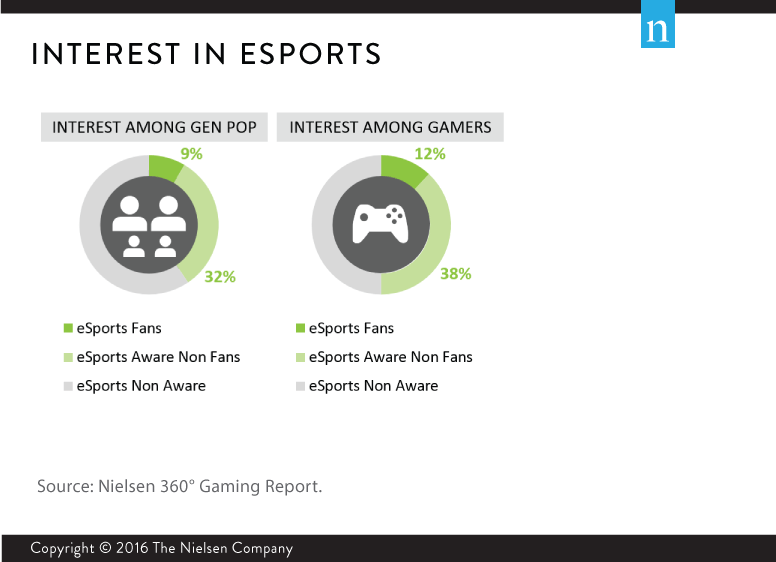The definition of “gaming” continues to evolve, and mobile gaming is playing a large role in broadening traditional perspectives. While many consider “gamers” to be a niche group of PC and console players, the rise of mobile gaming has expanded the definition to a much wider group. While gamers from yesterday might have been more likely to be teenagers playing Halo down the street, mobile gaming apps have made the activity more accessible to the masses—even the grandmother next door.
Not only have mobile gaming apps expanded the gaming landscape, but the growing popularity of eSports and the introduction of virtual/augmented reality (VR/AR) devices to the category are making gamers even more of an interesting and attractive market.
According to findings in the Nielsen 360° Gaming Report, mobile/tablet gaming is just as appealing to women as it is to men compared to other forms of gaming (51% of men and 49% of women 13+ game on mobile/tablet devices). Comparatively, 65% of 8th generation console gamers are men. Mobile gamers also skew older than console players. The average mobile gamer is 36 years old, whereas the average 7th and 8th generation console gamers are 34 and 31 years old, respectively.
The other factor to consider when it comes to mobile gaming is penetration and availability. As almost every U.S. household owns some sort of mobile or tablet device, both casual and hardcore gamers find themselves gaming on these devices because of their accessibility, range of other uses and affordability.
With the increase in popularity, coverage and recognition of eSports—even the definition of gaming has started to shift. Although roughly 10% of the population is aware of and interested in eSports, these fans are more likely to be males (81%) and Millennials (51%). They also have higher average incomes (average $69,000), making them an attractive audience for marketers.

In addition, VR/AR devices recently entered the mainstream gaming scene, which could broaden the scope of the gaming realm even further. Education of these types of devices is still low, as only about 16% of gamers are aware of the recently released Samsung Gear VR. But eventually, these devices will change the way consumers game as well as the way people consume other forms of entertainment.
How do marketers reach these gamers? Generating “buzz”—word of mouth—is how gamers typically become aware of both console/PC and mobile titles. While TV commercials are more effective for console/PC games, mobile games have the ability to utilize the app store (through rankings and features) to best reach these gamers.
Although the speed at which eSports and VR gaming interest will grow remains to be seen, one thing is for sure, how “gamers” are defined continues to change.



